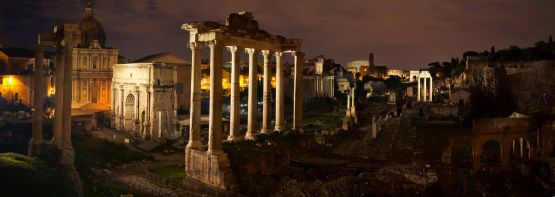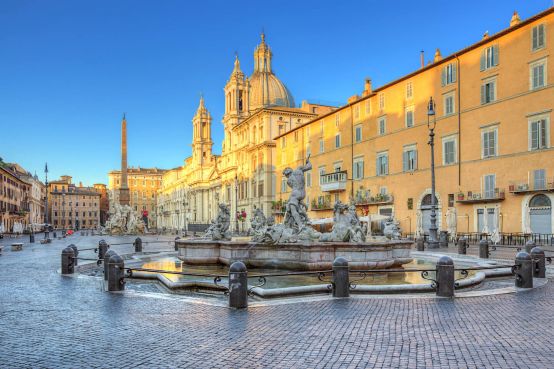The early history of Rome and its creation are linked to a large number of myths. Amongst Roman ancestors are Enea, who escaped from Troy in flames with his father Anchise and his son Ascanio, they arrived on the coast of Lazio where he later married the daughter of the king.
A descendent of the hero of Troy, is Numitore, king of Alba Longa, and his daughter Rea Silvia who married Marte, king of war and gave birth to twins Romulo and Remo.
Numitore had a very evil and envious brother called Amulio who wanted to rule and for this reason he imprisoned his brother forcing Rea Silvia to become a priestess. Amulio seized power and ordered that the twins be killed but the servant ordered to do so couldn't commit the cruel act, instead he put them in a wicker basket and abandoned them on the river Tiber.
Luckily they were saved and fed by a wolf until the shepherd Faustulo found and raised them. The most widely accepted myth of the creation of city and the beginning of Rome History.
When these abandoned children grew up they decided to go back to Alba Longa to avenge their de-throned grandfather. They punished the cruel Amulio and set their grandfather free. They then left Alba Longa and went back to the Tiber banks where they had grown up and just as an oracle had predicted, they founded a city upon the Palatino hills of Rome and so began the early history of Rome.
It had been decided that no one would pass the boundary drawn up without permission of Romulo. Remo, nevertheless was full of contempt and went beyond the sacred confines of the city (the pomerium) drawn up by his brother. It was for this reason that Romulo killed him.
After the foundation of the city the problem was to find people to populate it! Romulo gathered local shepherds but there were no women so they therefore kidnapped the ‘Sabines', the women of a population that lived on the nearby mountains.
The Sabines led by Titus Tazio, King of Curiti (Sabine tribe) came back to free the women and take revenge for the insult. Thanks to the betrayal of Tarpea, the daughter of the guardian of the Roman fortress, who opened the gates to the Sabines who entered the town to fight the enemy warriors.
When the battle began the courageous intervention of the female ‘Sabines' who threw themselves between the fighters (their husbands on one side and their fathers and brothers on the other) and called for an armistice. Peace was restored and Romulo and Titus Tazio ruled the town together. The Sabines settled on the Quirinale and the two sides merged giving life to a sole form of government. Romulo ruled the town wisely (from 753 - 716 AC), but one day during a storm he disappeared, carried off by the God Mars. In the Forum his tomb was covered by a piece of black marble (Lapis Niger).
Early Roman history fixed the date for the foundation of the city as 21st April 753 BC, (ab urbe condita) from now onwards the roman chronological dates would be used. The first hill to be occupied was the Palatine where it's most ancient ruins prove the existence of a village surrounded by an embankment, the traditional square.
The archaeological discovery under the Campidoglio and on the Palatine set the first settlements already from the 10th century BC, more than probably farmers and shepherds seeking shelter on the ‘Palatino', ‘Esquilino' and ‘Quirinale' from the frequent flooding of the Tiber and the raids of enemies.
These settlements continued to grow until in 8th century BC they united into a large community whose political and religious centre was set up by the Campidoglio. Under the Etruscan government, between 7th and 6th centuries BC urban conglomeration transformed into a real city. According to legends 6 kings followed Romolo until the last, ‘Tarquinio il superbo' considered a tyrant and was thrown out of power in 510 BC leading to a form of republican government.
Tarquinius Prisco with the help of the Etruscan architects enriched the town with many public buildings. He enlarged and paved the forum, built Circo Massimo for great games. The division of the city into administrative districts and the dividing up of citizens into classes reflected the Etruscan influence.
During this Etruscan domination a project was outlined ‘Cloaca Maxima' which served to drain the valleys of the town , the erection of Giove's temple on Campidoglio., The sixth king Servius Tullio, one of the greatest kings after Romulo well known after his political organisation.
He divided the population up into five different classes and ensured that the city was fortified with the construction of the town walls ‘Mura Serviane' surrounding all 7 hills of the city.









